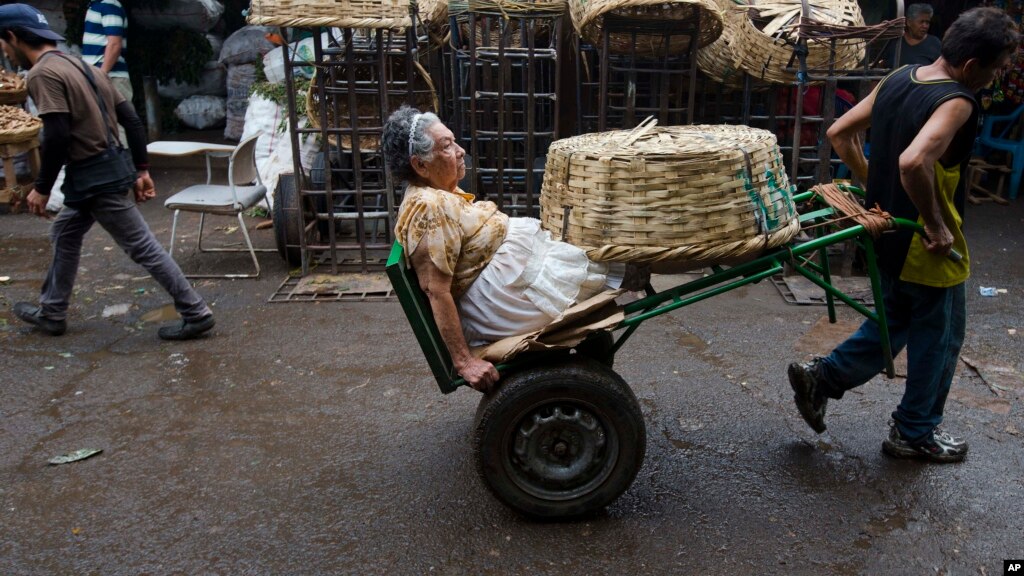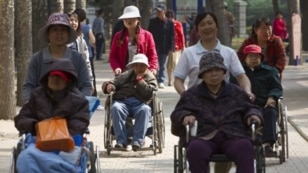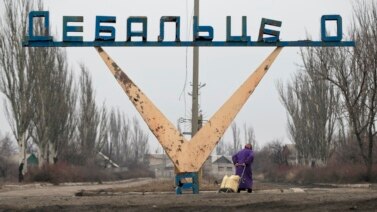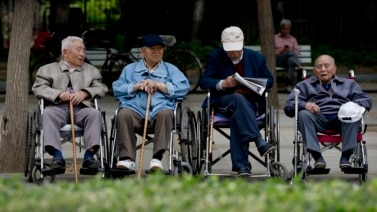
More than half of all people 65 years and older have no long-term health care.
The International Labor Organization released the study Tuesday. The United Nations marks the International Day of Older Persons on Thursday.
Researchers gathered information from 46 countries for the study, says the ILO. Those countries are said to be home to 80 percent of the world population age 65 and over.
ILO officials say the study found a lack of social protection for the elderly and a worldwide shortage of 13.6 million workers to care for them.
The report says 300 million older adults need a high level of health care. It says many of them cannot walk. Others need help for daily needs.
Xenia Scheil-Adlung is the health policy coordinator at the ILO. She wrote a report on the study and its findings. She says the whole long-term care issue is neglected in many areas because of poor treatment of both the elderly and women.
“This age discrimination and gender discrimination, but particularly age discrimination, is publicly not considered as a serious concern. Other than other forms of discrimination, we find that it is largely accepted that, for example, older people get less services. They are expected to consume less public funds. But if you compare rehabilitation services, which are needed both by younger and older persons, we find that older persons get much less.”
The report says that Africa faces a shortage of 1.5 million long-term care workers. It adds that more than 90 percent of older persons there do not receive care. The report says the need for long-term health care workers is greatest in Asia and the Pacific.
And it says the area has a shortage of 8.2 million long-term care workers. It adds that 65 percent of those over 65 in Asia and the Pacific need assistance.
Older people generally receive better care in Europe. But, the report notes that even European countries spend an average of only 2 percent or less of their Gross Domestic Product on long-term care for the elderly. The GDP is the total value of the goods and services produced in a country during a year.
The ILO says the shortage of workers means unpaid female family members will be forced to care for up to 80 percent of all older people who need help.
The study says global populations are quickly aging and few countries are prepared to deal with the increasing needs of their older citizens.
The ILO is calling for the elderly to receive health care paid for by national social insurance plans or by taxes. It also says increasing the number of long-term care workers would both provide care for older people and create jobs.
I’m Jim Tedder.
Lisa Schlein reported on this story for VOANews.com. Christopher Jones-Cruise adapted it for Learning English. George Grow was the editor.
Words in This Story
elderly – n. people who are old or past middle age
discrimination – n. the practice of unfairly treating a person or group of people differently from other people or groups of people
rehabilitation – n. bringing (someone or something) back to a normal, healthy condition after a sickness, injury or drug problem
insurance – n. an agreement in which a person makes regular payments to a company and the company promises to pay money if the person is injured or dies


